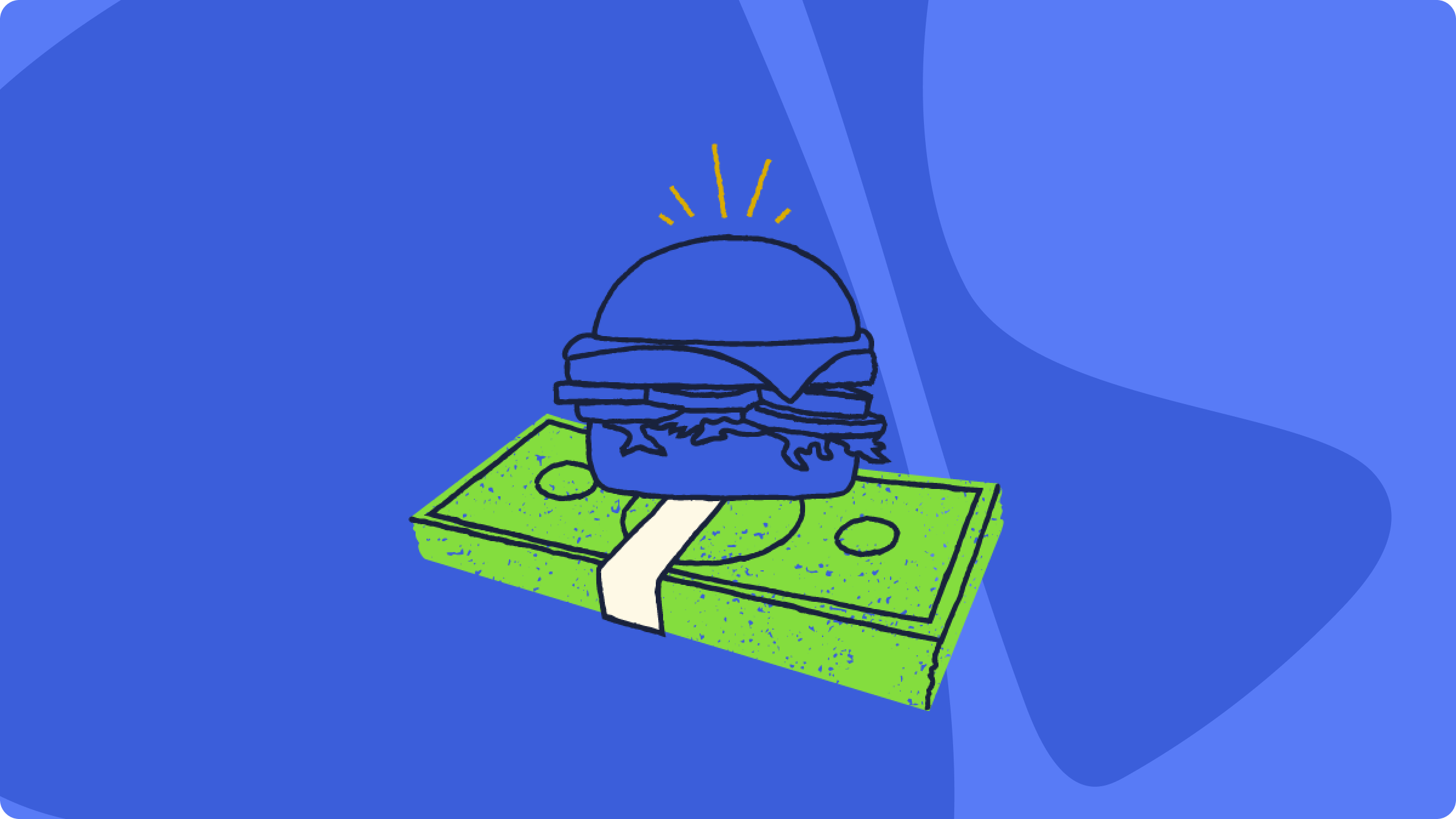Grocery Budget for Two: How We Eat Healthy for $600/Month

Wondering how much is a reasonable grocery budget for two? The USDA puts the average weekly cost of food at home for a family of two at $150 a week, or $600 per month (and that’s on their moderate cost food plan!). Cue the sigh of relief and feeling a little less guilt if you’re eyeing your current grocery spending.
Grocery spending comes in all shapes and sizes. Maybe you’re a total foodie, or maybe you love rice and beans. Maybe you love eating lobster every night, or you’d rather stay home and order takeout. Perhaps you are paying down debt at a wildly frantic pace. Maybe you’re saving up to buy a house. Point being, you have your own priorities and life.
Our Food Budget: A Few Caveats
Your number might look wildly different from ours (or the average), and that’s perfectly alright.
The amount you spend on food is completely based on those priorities. My way isn’t the right way, nor is it possible for or preferable to everyone. This is just a glimpse into another option—one way of doing things that’s working really well for two people.
A few other things to keep in mind about my situation:
- We live in a fairly low cost-of-living area.
- $100 a month is budgeted for eating out (more on this later). That makes a total of $700 for food costs. And, in all honesty, it’s rare to have a month where we don’t have to move money around in YNAB (the app we use for budgeting) just a little with our grocery category.
- Our grocery budget is for food items only. Cleaning supplies and paper products are budgeted in a separate “Home Supplies” category.
- Most of our shopping is done at our local co-op. If we can’t find something there, we’ll stop at one of the big-box grocery stores on the way home.
We Prioritize High-Quality, Healthy Food
For my husband and I, high-quality, healthy food that nourishes our minds and bodies is our number one priority.
I used to think paying down our student loans took the number one spot. However, after a series of health issues and careful research alongside a qualified holistic practitioner, I drew a different conclusion: What I put into my body every day has a direct impact on my physical, mental, and emotional wellbeing. And it’s worth investing in.
Now, we don’t go crazy. I don’t buy every new hot supplement on the market and I still can’t afford free-range chicken, but we do our best while still leaving room to focus intently on paying down those loans and traveling once in a while. We’ve made amazing progress on our debt which will be paid off in full eventually (thanks again, YNAB budget). But we eat every single day, so an emphasis on this area was key for us.
Cut Yourself Some Slack on the Grocery Bill
This isn’t an article about how to save money on groceries, it’s about giving yourself permission to fully prioritize something that’s important to you—in all its glory (and cost). But then I realized that’s pretty much all we write about here at YNAB. You cut spending in one area so that you can put those dollars towards the better thing, whatever it is for you.
So, if you’d like to focus more on your health, or if you have a family member who requires a specialized diet, or you want to support the local farmers in your area, I’m here to say YES! Go for it! It may require trade-offs in other areas of your budget, so take time to reassess your priorities and make changes if you need to.
More About How We Grocery Shop: Meal Planning
We are big proponents of meal planning. It sets us up for success every single time and does help cut down on how much we spend on groceries. I pay for an app to organize everything for me. I do all my shopping on Saturday mornings so we’re completely set for the week. This saves a lot of time and money because I’m only buying what we need for a set number of days.
.jpeg)
Need a little help with meal planning? Use this link to get a full month of meal planning for free with Cook Smarts!
We Stay In Often and Cook from Scratch
On average, we cook six meals from scratch each week (which is a much lower average cost than eating out each meal). We don’t eat out very often these days. Side note: I will not even tell you what our dining out budget looked like when we were living in Los Angeles. Nope, not going there.
Cooking from scratch allows you to control the ingredients and cuts down on grocery costs compared to buying pre-made food. I don’t particularly enjoy cooking, but there is something pretty satisfying about getting complete nourishment from something I made myself (and it’s easier for our small family size!)
Pay for Quality in Your Monthly Grocery Budget
My grocery list keeps me shopping primarily around the perimeters, where the freshest whole foods are kept: fruits, veggies, dairy, eggs. These are your friends. Venturing further into the center of the store will lead you to packaged, processed foods filled with preservatives and ingredients I’d pay money to hear people try to pronounce correctly. You might be able to stretch your dollar further in these areas, but this is not the food I want to fill my body list.
Shop Local
One of the best ways we can support our health, a sustainable food system, and our planet is to buy food grown in our own area. It’s also one of the best ways to ensure optimal taste! Go to your local farmer’s market and strike up a conversation with the vendors. Oftentimes, the person working the booth is the same person who grew the food.
Reduce Waste
One of my favorite things we’ve started doing over the past year is buying in bulk with our own containers. We take our glass jars to our local co-op every week and fill them with only what we need for the next seven days. We simply weigh the empty jars, record the weight on a sticker, then fill them up with bulk ingredients—nuts, seeds, grains, chocolate, honey, granola, and flours. The store clerk then subtracts the weight of the empty jar from the overall weight. It’s great for cutting down our plastic consumption and helps us reduce waste by only buying what we need. I hate throwing away food for many reasons, but envisioning my money going into the trash is one of the worst.
Loosen Up Now and Then!
Here at YNAB, we often say “rigid budgets break.” The same is true when it comes to eating regimens. We do our best to eat with long-term health in mind, but there are days when we eat donuts. Fast food? Yep, sometimes. We have a regular “super cheap” meal that might consist of mac & cheese or nachos. Usually it’s for the sake of our budget, and that’s okay! Eating beans and rice for three weeks so you can make an extra payment towards your credit card debt is totally fine if that becomes your priority. And a few days of it here and there won’t ruin your health!
And that’s what it all comes back to: your priorities. Find what is most important to you and run after it with your whole heart—and budget.
Need help prioritizing your dollars where you want them to go? Organize it all with the simple, easy-to-use personal finance app YNAB. It’ll help you cut down on grocery spending, or give you permission to spend guilt-free (it’s all up to your priorities!). Start your free trial today!

.png)





.png)





.jpg)


